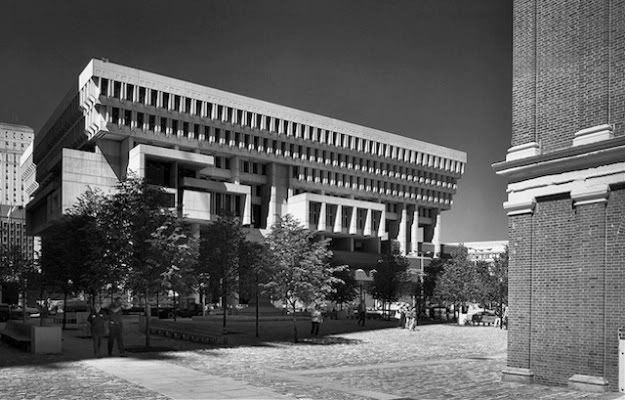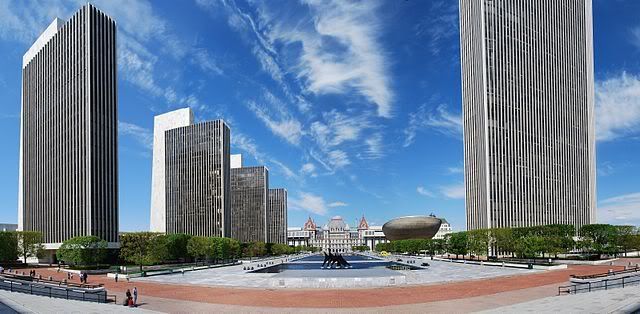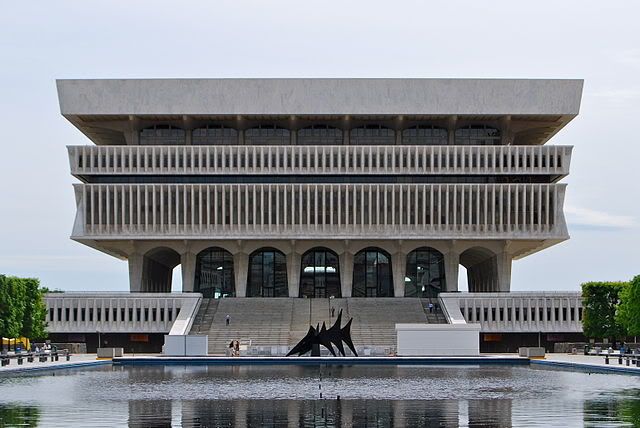Welcome to DU!
The truly grassroots left-of-center political community where regular people, not algorithms, drive the discussions and set the standards.
Join the community:
Create a free account
Support DU (and get rid of ads!):
Become a Star Member
Latest Breaking News
General Discussion
The DU Lounge
All Forums
Issue Forums
Culture Forums
Alliance Forums
Region Forums
Support Forums
Help & Search
The Other Modernism
[div style="text-align:center;"]

Nukes are to the point. In the popular conversation about architecture and design, modernism has been oddly domesticated by the term midcentury. As with the proliferation of the surname Eames as a catchall for retro-futuristic connoisseurship, midcentury reduces form-follows-function to form-follows-fun: it connotes the sophisticated yet familiar good taste you see in shelter magazines, all those chairs that are timelessly good to sit in yet somehow, in their charismatic profiles, make life seem smart and great. “Atomic-age” and “Jet-age” have become swingin’ signals for ring-a-ding-ding consumer goods made in swoopy and sexy plastic and chrome. And yet there is another side to this story, one in which the Smithsons are a kind of Yin to the Eames’ Yang, an eternally rainy Britain to their perpetually sunny California.
That other side is the cold war, in which atoms and jets had a different role and connotation. Think of the Mad Men episode in which Don Draper travels to California for a presentation by military contractors; recoiling from the high-tech apocalypse they describe, he retreats to a milieu of sybaritic lotus-eaters in an Eamesian house of steel and glass. There’s much to debate about that particular hall of mirrors, about one popular culture’s incarnation of another—but something about the juxtaposition of high stakes and high design rings true. While the Eames’ (who developed much of their bent-plywood technology for military contractors during World War II) supplied a stylish refuge from the era’s tensions and terrors, the Brutalists deliberately attempted a more ambivalent response to their moment.
The Smithsons, along with Reyner Banham, described their New Brutalism as “an ethic, not an aesthetic,” and that ethic can be said to have had two essential premises. The first was that tough and complex times called for tough and complex architecture. The ruins of World War II (and intimations of a World War III) inspired architecture so massive as to be nuclear-proof but also so special and soaring in form that it might transcend a fear-struck moment. The awfulness of the era called for awesomeness in its buildings. (“It will outlast,” New York Times architecture critic Ada Louise Huxtable wrote of Boston City Hall in 1969, “the last hurrah.”) The second premise was that buildings built by governments, from city halls to public housing, answered to a higher calling than those created by private development, which needed only to be efficient and entertaining. What exactly that calling was and is, and whether structures like Boston City Hall answered it, is a matter of perpetual debate—and that debate, and the notion that architecture can and must summon it, is thrilling.
Full essay (~1,500 words): http://nplusonemag.com/the-other-modernism
Excellent essay paing due respects to Brutalist architecture. I'm one of the few people who loves Brutalism. There's a comforting weight, grandeur, and inspirational quality to really well designed Brutalist architecture. Every time I set foot onto the Empire State Plaza in Albany, my spirit just soars. There's also quite a bit of mystery too, as after all these years I still don't know what the intended use of some of the structures is, except perhaps as ICBM missile silos or alien spaceship landing pads. Granted, I'll give you the fact that most Brutalist buildings are nothing more than horrid concrete blocks, but the really good ones have a beauty and grace all their own.
[div style="text-align:center;"]

[div style="text-align:center;"]

InfoView thread info, including edit history
TrashPut this thread in your Trash Can (My DU » Trash Can)
BookmarkAdd this thread to your Bookmarks (My DU » Bookmarks)
0 replies, 1240 views
ShareGet links to this post and/or share on social media
AlertAlert this post for a rule violation
PowersThere are no powers you can use on this post
EditCannot edit other people's posts
ReplyReply to this post
EditCannot edit other people's posts
Rec (3)
ReplyReply to this post